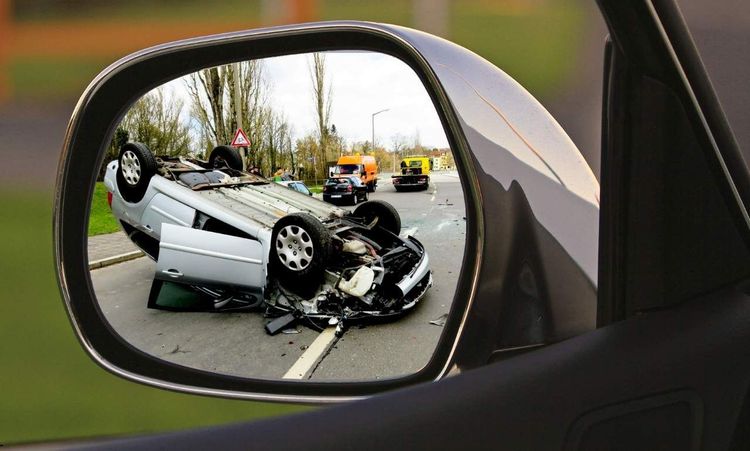After a car accident, life can shift in an instant. Medical bills pile up. Your vehicle is wrecked. You’re sore, frustrated, and unsure of what to do next.
If someone else was responsible, filing a lawsuit might be your path to justice. But lawsuits aren't simple. They follow a set process. Each stage matters. You can’t just jump into court and expect a check.
In this article, we'll break down The 7 Basic Steps of the Car Accident Lawsuit Process. You’ll see how it starts, where it can end, and what each step really means.
Let’s take the guesswork out of it.
Preparing for Your Case
Before anything else, get organized. This stage sets the tone for everything that follows.
Start by collecting facts. Gather police reports, pictures of the accident, and witness contact info. Every scrap of evidence helps later.
Go see a doctor—even if your injuries seem minor. Some symptoms show up days later. Medical records become your proof in court.
Also, track every expense. That includes hospital visits, therapy, car rentals, and missed workdays. These costs build your claim.
Now is a good time to talk to a lawyer. You don’t need one, but their help can make a big difference. They know how to deal with insurance adjusters, collect evidence, and fight for fair compensation.
This stage is about building a strong foundation. Think of it like gathering your armor before battle.
Filing a Claim with Your Insurer
This step involves talking to your own insurance company. It’s required in most states, no matter who caused the crash.
You usually have just a few days to report the accident. Don’t wait. Waiting too long might hurt your case later.
When filing, keep things honest and clear. Give the adjuster your documents: photos, the police report, repair estimates, and doctor’s notes.
Avoid guessing or taking blame. If you're unsure, say so. Anything you say might be used against you.
Often, the insurer will offer a settlement. It might seem generous at first glance. But be cautious—these offers are often lower than you deserve.
You can push back. You’re allowed to negotiate. This is where having a lawyer really helps.
If negotiations stall or break down entirely, the next option is taking legal action.
Filing a Civil Lawsuit
When talks with the insurer don’t work, this is your next move.
Filing a lawsuit means submitting a formal complaint to a civil court. This complaint explains your side, the damages you’re seeking, and why the other party is responsible.
Once filed, the other party is “served” and given time to respond. They might admit fault, deny everything, or file their own claim against you.
Lawsuits must be filed within your state’s statute of limitations. That deadline might be two or three years from the crash. Miss it, and your case may be thrown out automatically.
Filing comes with fees and paperwork. You’ll need patience. Legal timelines aren’t fast. But now, things start moving officially.
Discovery
Discovery is when both sides show their cards. It’s like peeling back the curtain to see what the other team has.
Attorneys ask questions, demand documents, and take depositions. That includes witness statements and expert opinions. You might even be asked to answer detailed written questions about your background and health.
If the defense wants their own doctor to examine you, they can ask the court for it. You may have to attend.
This phase often reveals surprises. Maybe the other driver was texting. Maybe you discover prior accidents or injuries. Sometimes new evidence flips the case entirely.
Discovery can stretch out for months. It's detailed. It's frustrating. But it helps clarify what really happened—and who can prove it.
Settlement
Most car accident lawsuits settle before trial. It’s faster, cheaper, and less stressful.
A settlement is a deal—usually a lump-sum payment in exchange for dropping the case. Once signed, it’s final. You can’t go back and ask for more later.
Sometimes, settlements happen early. Other times, they come after months of fighting. Discovery often motivates both sides to settle. When the facts are clear, there’s pressure to avoid a courtroom.
Mediation is a popular option. It’s a formal meeting with a neutral third party. Both sides try to find common ground without going before a judge.
Not every offer is fair. You don’t have to accept the first number thrown at you. Ask questions. Review every line. Make sure it covers your losses—medical bills, pain, lost wages, and vehicle damage.
Still not satisfied? Then you take your shot at trial.
Trial
Trial is what most people picture when they think of a lawsuit. But few cases make it this far.
A trial gives both sides the chance to tell their story in court. Witnesses testify. Experts explain injuries and impact. Lawyers argue their points. Evidence is shown to a judge or jury.
You might have to take the stand. It’s stressful, but your lawyer will help you prepare. Every detail counts here.
Trials vary in length. Some last a day. Others take weeks. It depends on how complicated the case is and how busy the court is.
At the end, a verdict is given. If you win, the court will order the other party to pay. If you lose, you walk away with nothing—unless you file an appeal.
Appeal
Let’s say the trial didn’t go your way. Or maybe you won, but the other side is unhappy with the verdict. Either way, the case might continue.
An appeal asks a higher court to review what happened at trial. It doesn’t mean starting over. You won’t present new evidence or reargue facts. Instead, the appellate court checks for legal mistakes.
Maybe a judge allowed bad evidence. Or maybe jury instructions were unclear. If mistakes affected the verdict, the appeal court can reverse the outcome.
Appeals are time-consuming. They can drag on for months or even years. And they aren’t guaranteed to succeed.
Your lawyer can help weigh the odds. Sometimes, it’s better to move on than spend more time and money fighting.
Conclusion
Filing a car accident lawsuit is rarely quick. But knowing what to expect makes the road easier to walk.
Start with strong evidence. File insurance claims quickly and carefully. If the insurer won’t play fair, file your lawsuit. Use discovery to uncover facts. Negotiate for a fair settlement. And if you must, take it to trial—or appeal if needed.
Each step in The 7 Basic Steps of the Car Accident Lawsuit Process plays a key role. Skip one, and you may weaken your case.
Stay focused, stay honest, and seek help when needed. Justice takes time—but it’s worth the effort when your future is on the line.




